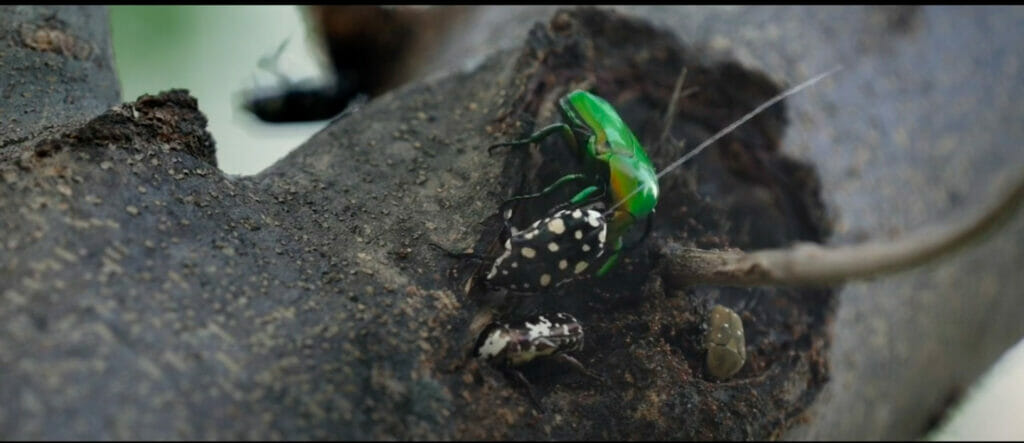“We cannot see our reflection in running water. It is only in still water that we can see our true selves,” goes a Taoist proverb. The still waters of Doddanekundi lake allowed me to see who I was. This article is as much the story of one of the largest lakes in Bengaluru as it is my story.
An experience to remember
It all started for me in 2016 when my middle school science teacher took the nature club- Bird watching. All I remember is seeing hundreds of birds. From the near-threatened painted stork to the magnificent spot-billed pelican, we saw over 50 species of birds during the walk.
I realised that I didn’t have to travel hundreds of kilometres to national parks, like the Bandipur National Park or bird sanctuaries, like the Ranganathittu Bird Sanctuary, to see exotic and rare species of birds. I just had to walk a 100 metres to the neighbourhood lake that I did not know even existed prior to that day!
It was that “experience” that made me fall in love with Doddanekundi lake and it has changed my life.

Read more: Finding the hidden birds in urban green spaces
The lake through the seasons
I began visiting the lake daily trying to spot and identify new species of birds, butterflies, and snakes. I found a sense of peace and tranquillity within the boundaries of the lake.
Visiting the lake and exploring the vast biodiversity that considers the lake their home became a part of my everyday routine. Slowly, my day began feeling empty without a visit to the lake. Over a few years, I noticed certain patterns in the way the lake’s habitat changed as well as the birds that visited the lake.
From March to June, resident species of birds, such as bulbuls, koels, white eyes and hornbills were commonly seen in the woodlands surrounding the lake, whereas snipes, swamphens, storks, and egrets were seen in large numbers. The monsoons would transform the lake into something completely new. Birds like munias and weavers nested along the perimetre of the lake, attracting bird photographers and bird watchers from all around Bengaluru.

Winter marked the arrival of a spectacular migration. Hundreds of shovellers, whistling ducks, and teals flocked to the lake, creating a mesmerising spectacle. Raptors like marsh harriers, booted eagles, and spotted eagles became a common sight, gracefully hunting over the wetlands. Rare and exotic species of warblers and flycatchers frequently appeared in the wooded patches along the lake’s edge.
The lake’s habitats constantly changed with the seasons. The dry summers would result in extremely low amounts of water in the lake whereas the southwest monsoon would fill up the lake to its maximum capacity.
By the time winter arrived, the volume of water in the lake would be just enough to attract various species of waders like sandpipers, stints, plovers, etc. This cycle of the lake drying up and getting filled again by the monsoons continued for a few years.
However, in 2021, everything changed.
Read more: A to Z guide to Bengaluru’s lakes
How the rains affected the lake
Bengaluru received close to 1,500 mm of rain in 2021, considerably more than the previous few years. This sudden increase in volume had a devastating effect on Doddanekundi lake. The rajakaluve that drains into the lake could not handle such large volumes of water. As a result, the kaluve flooded, filling the lake with untreated and heavily polluted sewage water.
The once-thriving Doddanekundi lake had been reduced to a mere shadow of its past self. The water no longer housed fish. There was not a single duck or wader in sight. The number of birds in the lake began to drop drastically. There was a strong stench that filled the air and the number of people visiting the lake too began dropping daily.
The number of birds I would see began to drop considerably. From spotting and identifying over 40 species of birds in a single day, I began struggling to spot just 20 odd species of birds. Migratory ducks and waders were nowhere to be found. Invasive species of weeds had covered the entirety of the lake. Once one of the most biodiverse lakes in Bengaluru, Doddanekundi lake had simply become a polluted tank of water.
This lake is where my story began and this lake has the potential to influence hundreds of young minds, who live around it. This lake has shaped me to be the person I am today and has instilled in me a passion for the environment and its conservation. To see it collapse in front of my eyes is something that I cannot accept.
The story of Doddanekundi lake is just one of many in Bengaluru. It is time to protect these lakes, prevent the entry of untreated sewage water, and put a stop to their “Soup Bowl” development.
Watch the documentary on Doddanekundi lake by Anirudh, titled The Story of a Lake.
Very well written Anirudh!Absolutely summarizes the significance of the lake and how it’s changed in recent years.
Well Documented and Absolutely loved it. Great price of work Anirudh
A nice narrative young boy. Like to see more like this. Keep it up. Bravo!
Anirudh, a truly honest account of the beauty and the devastation of Doddenekundi lake.
May the lake that shaped you and ignited your passion be restored to its glory again so that more youngsters like you are inspired to tend our Nature better.
What a beautiful well written article. I am truly in awe Anirudh; you are only 17 ! I know the future is in good hands. Bravo !
Excellent Anirudh ! If each one of us just think a while on the ecosystem around us we can make it a happy place for our coming generations!